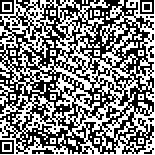| 摘要: |
| [摘要] 目的 探讨重型颅脑损伤患者围手术期并发癫痫的危险因素及应对措施。方法 回顾性分析2013-01~2015-01于该院住院的重型颅脑损伤患者80例,从中筛选出围手术期并发癫痫者,分析性别、年龄、脑损伤类别、损伤部位及损伤性质等因素与癫痫发生的关系,对各项观查指标的数据进行回顾性统计分析,探讨围手术期发生癫痫的相关危险因素,并针对相关危险因素的特点提出对应措施。结果 单因素分析显示重型颅脑损伤围手术期并发癫痫的危险因素有患者的年龄、损伤部位、伴有脑挫裂伤、蛛网膜下隙出血及颅内血肿等。多因素Logistic回归分析显示低龄、额顶叶损伤、伴有脑挫裂伤、蛛网膜下隙出血及颅内血肿为重型颅脑损伤围手术期并发癫痫的危险因素。结论 低龄、损伤部位、是否伴有脑挫裂伤、蛛网膜下隙出血及颅内血肿是重型颅脑损伤围手术期并发癫痫的危险因素,对具有这些危险因素的重型颅脑损伤患者在围手术期进行早期预防及临床观察及护理有利于降低外伤性癫痫的发生率。 |
| 关键词: 重型颅脑损伤 围手术期 癫痫 危险因素 应对措施 |
| DOI:10.3969/j.issn.1674-3806.2015.12.17 |
| 分类号:R 651.1+5 |
| 基金项目: |
|
| Risk factors of perioperative concurrent epilepsy on patients with severe head injury and their countermeasures |
|
HAN Xiao-ming, YOU Yu-juan, ZHOU Wen-jiang, et al.
|
|
Department of Neurosurgery, the People′s Hospital of Jiuquan City, Gansu 735000, China
|
| Abstract: |
| [Abstract] Objective To explore the risk factors of perioperative concurrent epilepsy on patients with severe head injury and their countermeasures.Methods Eighty patients with severe craniocerebral injury were collected in our hospital from January 2013 to January 2015, and their clinical data were retrospectively analyzed. The relationship between these factors and epilepsy in age, gender, class of brain damage, injured parts and nature of injury were analyzed. According to the characteristics of the risk factors, the related countermeasures were put forward.Methods Single factor analysis showed that age, cerebral contusion, ruptured cerebral dura mater, pitting a skull fracture,intracranial hematoma were closely related to perioperative severe head injury complicated with epilepsy. Multiariable Logistic regression analysis showed that low age, frontal and parietal lesion, and accompanied by cerebral contusion hemorrhage, intracranial hematoma and subarachnoid gap are risk factors for severe craniocerebral injury complicated with perioperative epilepsy.Conclusion Low age, cerebral contusion, ruptured cerebral dura mater, pitting a skull fracture, intracranial hematoma are risk factors for severe craniocerebral injury complicated with perioperative epilepsy. In response to these risk factors, countermeasures of early prevention and clinical perioperative observation and nursing are beneficial to reducing the occurrence of traumatic epilepsy. |
| Key words: Severe head injury Perioperative Epilepsy Risk factors Countermeasures |

